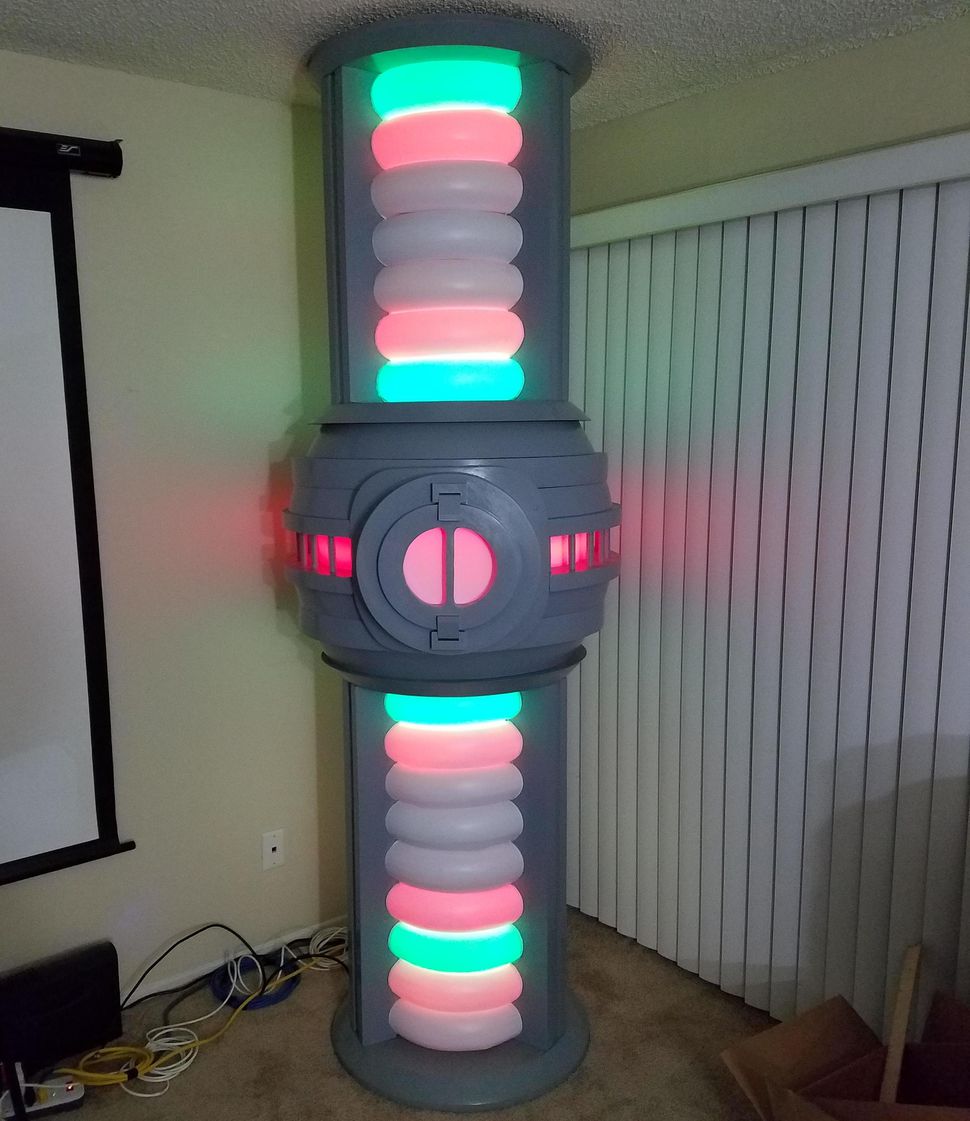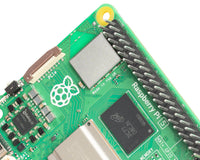
Raspberry Pi Roundup - a Star Trek Warp Core, an ultra-portable Pi and the EduBlocks programming language
Beam Me Up

Chris Koolmees is an engineer and Star Trek fan and he wanted a project that he could accomplish during a week off work. With assistance from his father, Chris came up with the idea of building an almost life-sized reconstruction of the Warp Core from the USS Enterprise on Star Trek: The Next Generation. Most of the structure is made out of vacuum-formed plastic and painted MDF and is decorated with light strips which are controlled by an Arduino which is sent signals by a Raspberry Pi. Of course, it wouldn’t be complete without the famous warp core “breathing” sound, so it has speakers built in which are driven by the same Raspberry Pi. Instead of housing dilithium crystals, the warp core holds Chris’ home server. You can see it in action briefly below and read more about the build on Chris’ company website.
Ultra Mobile

Pole Ergo (I think his name is Guy, but I’m happy to be corrected) from Lyon in France has taken a Raspberry Pi and made it ultra-mobile using a hinged 3D-printed case. He’s removed several components of the Pi itself, shortened the GPIO pins and then added a small Bluetooth keyboard for input. A 5″ screen and a LiOn battery completes the picture. He’s written the project up on Thingiverse, where you can also download the case printing files and see a lit of photos of the build. Unsurprisingly, the write-up is in English and French.
Bridging the Gap

When you’re ready to move from Scratch to Python, this transition can be quite painful. Suddenly, you’re faced with a pure-text programming interface and even with IDEs like Thonny helping you to get things going, you’re still left with the fundamental question: Where have all my coloured blocks gone.
Enter EduBlocks, a programming environment developed by Joshua Lowe which seeks to bridge the gap between Scratch and Python by helping you to write Python code, but with a Scratch- or Blockly-like interface.
He’s been developing it for a while now and you can give it a go by opening up a terminal and running the following command:
curl -sSL get.edublocks.org| bash
Once you’ve got it installed, you’ll want to head over to the Learning Portalwhere you can download worksheets. These include physical computing exercises (using components from CamJam EduKit 1), Sonic Pi and even Minecraft. I spoke to Joshua recently and he let me know about a new series of worksheet material he and others are developing: Lesson Plans. These exciting new resources for teachers will bring together the existing worksheets with plans to use in lessons with identified objectives and other stuff you need for the actual teaching. The first one, written by Claire Wicher deals with Minecraft and includes a teachers booklet and an accompanying Powerpoint presentation. To access this, and future lesson plans, head over to the Learning Portal and click on the Lesson Plans button. To find out more about EduBlocks itself, head over to the website.





